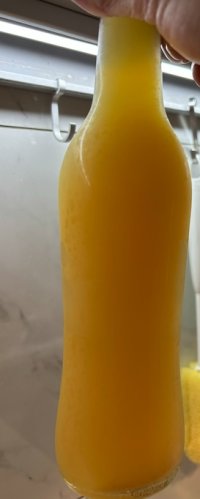Warning - what follows is probably overly technical for the present discussion and also perhaps somewhat pedantic. Please feel free to skip.
Per ISO 7886-1:1993 Sterile hypodermic syringes for single use – Part 1: Syringes for manual use, the tolerance on the graduated capacity of a syringe depends on the nominal capacity of the syringe V and the expelled volume Vex.
For syringes with a nominal capacity of V⩾5 ml, the tolerance amounts to ±4 % of Vex for volumes equal to or greater than half nominal capacity V, and ±(1.5 % of V+1 % of Vex) for volumes less than half nominal capacity V.
That means that when dispensing 25 mL from a 250 mL syringe, the accuracy is only ±16%. IOW, the best you can actually know is that you are delivering somewhere between 21 and 29 mL. Also, a typical 250 mL syringe is marked in 10 mL increments, so dispensing any volume that isn't a multiple of 10 will be even less accurate.
This is not to say that anyone is doing anything wrong. Rather, it is simply to point out that extreme precision and/or accuracy is not required for this task.

























![Craft A Brew - Safale S-04 Dry Yeast - Fermentis - English Ale Dry Yeast - For English and American Ales and Hard Apple Ciders - Ingredients for Home Brewing - Beer Making Supplies - [1 Pack]](https://m.media-amazon.com/images/I/41fVGNh6JfL._SL500_.jpg)































